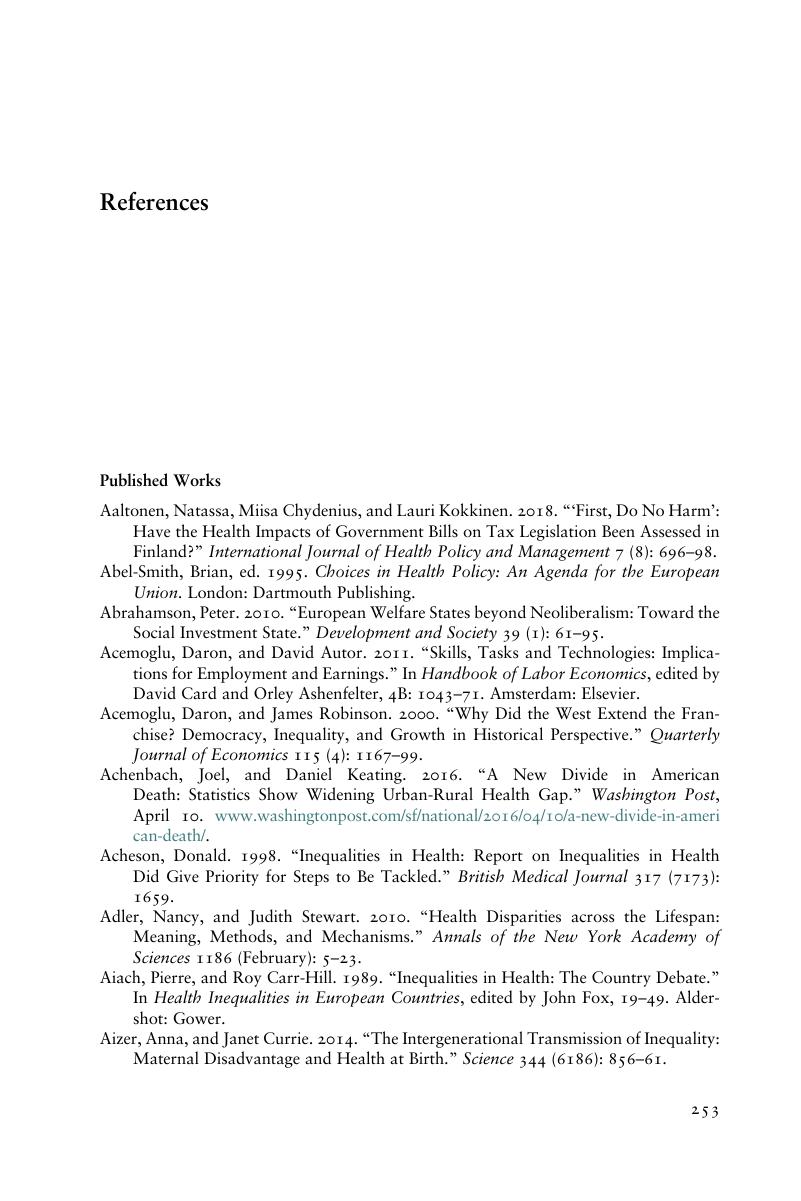Book contents
- Regimes of Inequality
- Regimes of Inequality
- Copyright page
- Dedication
- Contents
- Figures
- Tables
- Acknowledgments
- Abbreviations
- 1 Explaining Resilient Inequalities in Health and Wealth
- 2 Theorizing Regimes of Inequality
- 3 Health Inequalities
- 4 New Labour, the Redistributive Taboo, and Reframing Inequality in England after the Black Report
- 5 Inequality, Territory, Austerity
- 6 From Risk Factors to Social Determinants
- 7 In and Out of the Overton Window
- 8 Regimes of Inequality
- Appendix Content Analysis of Government and Commissioned Health Inequality Reports
- References
- Index
- References
References
Published online by Cambridge University Press: 24 December 2019
- Regimes of Inequality
- Regimes of Inequality
- Copyright page
- Dedication
- Contents
- Figures
- Tables
- Acknowledgments
- Abbreviations
- 1 Explaining Resilient Inequalities in Health and Wealth
- 2 Theorizing Regimes of Inequality
- 3 Health Inequalities
- 4 New Labour, the Redistributive Taboo, and Reframing Inequality in England after the Black Report
- 5 Inequality, Territory, Austerity
- 6 From Risk Factors to Social Determinants
- 7 In and Out of the Overton Window
- 8 Regimes of Inequality
- Appendix Content Analysis of Government and Commissioned Health Inequality Reports
- References
- Index
- References
Summary

- Type
- Chapter
- Information
- Regimes of InequalityThe Political Economy of Health and Wealth, pp. 253 - 284Publisher: Cambridge University PressPrint publication year: 2020



